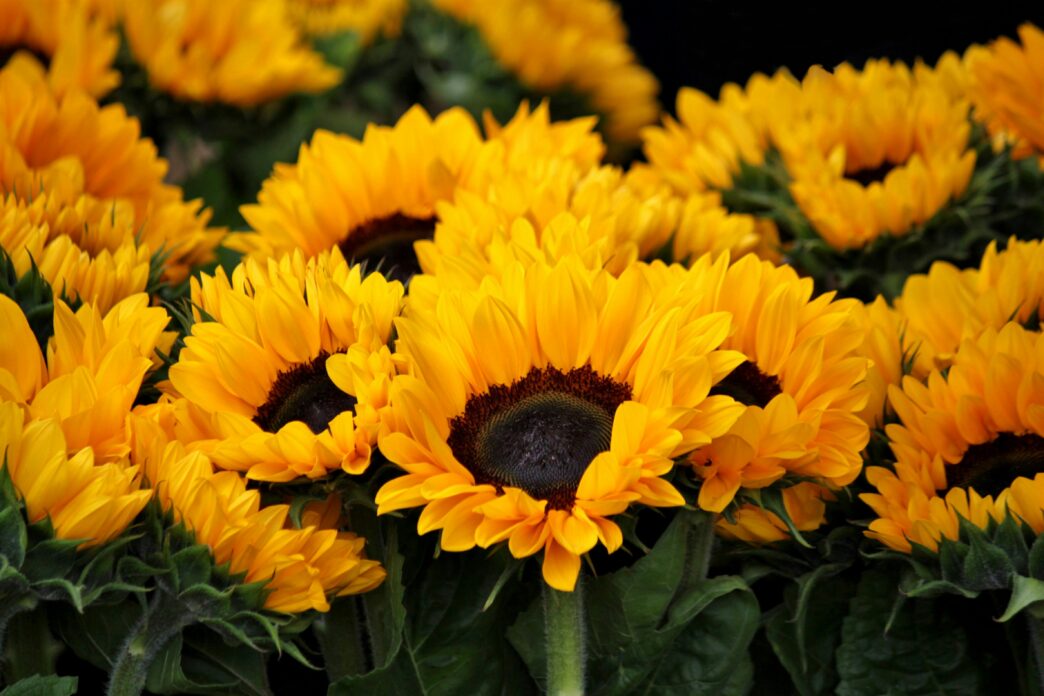Few plants capture the heart of summer quite like the sunflower (Helianthus annuus). With their golden faces turned toward the sun, these cheerful giants symbolize warmth, positivity, and abundance. Sunflowers are not just ornamental—they’re also useful, providing edible seeds, bird food, and even soil-improving qualities.
Whether you want towering sunflowers as a dramatic garden backdrop or compact varieties for patio pots, this guide will help you plant, grow, and care for these sunshine-loving flowers.
Why Grow Sunflowers? 🌻
Sunflowers are more than just pretty faces:
- Easy to grow: Suitable for beginners and children.
- Versatile: Available in tall giants, branching varieties, and compact dwarfs.
- Attract wildlife: Bees, butterflies, and birds adore them.
- Edible seeds: Many varieties produce tasty seeds for snacking or roasting.
- Soil helpers: Sunflowers can help draw heavy metals from soil and improve structure.
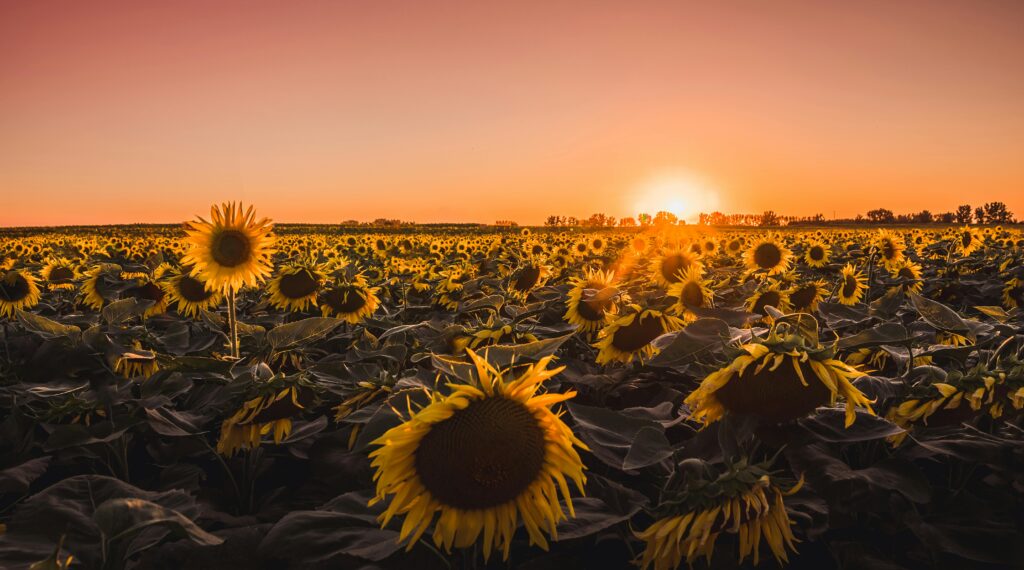
Ideal Growing Conditions 🌱
Sunlight
- True to their name, sunflowers thrive in full sun (6–8 hours daily).
- The more sun, the taller and stronger they grow.
Soil
- Prefer loamy, well-drained soil.
- Best pH range: 6.0–7.5.
- Add compost before planting for nutrient boost.
Water
- Regular watering is key during germination and early growth.
- Once established, sunflowers are fairly drought-tolerant but bloom better with consistent moisture.
Climate
- Best suited for USDA zones 4–9.
- Heat-loving annuals that thrive in warm summers.
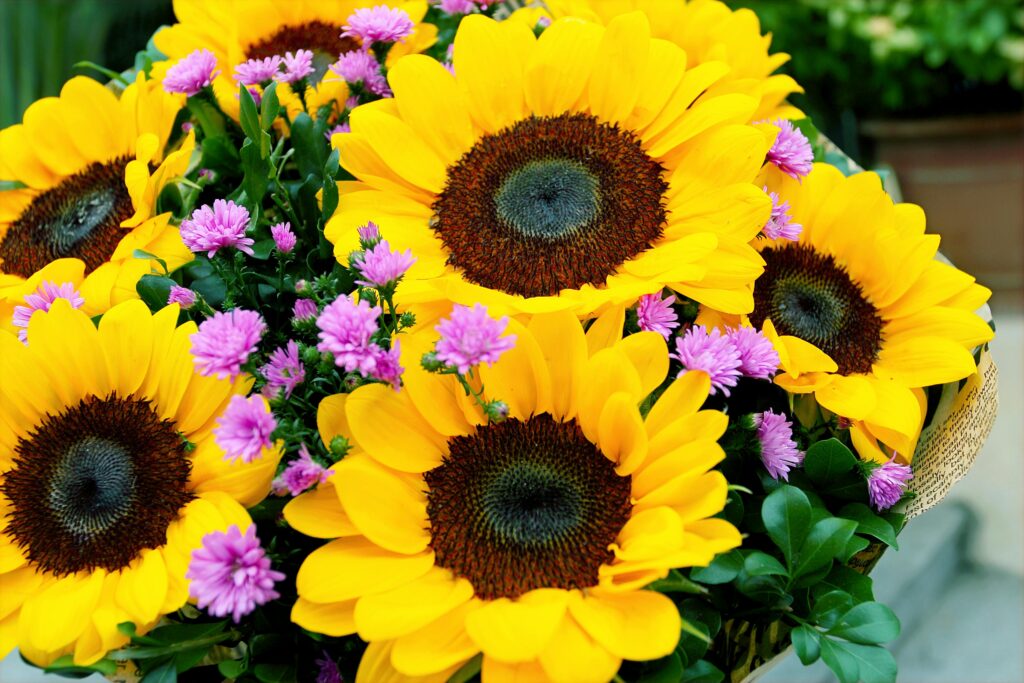
Types of Sunflowers 🌼
- Giant Sunflowers: Such as ‘Mammoth,’ reaching 12–15 feet tall.
- Branching Varieties: Like ‘Autumn Beauty,’ producing multiple blooms in red, orange, and yellow.
- Dwarf Sunflowers: Compact types like ‘Teddy Bear’ or ‘Sunspot’ ideal for containers.
- Colored Varieties: Deep burgundy, orange, and bi-color sunflowers for variety.
- Seed Sunflowers: Large-headed varieties grown specifically for edible seeds.
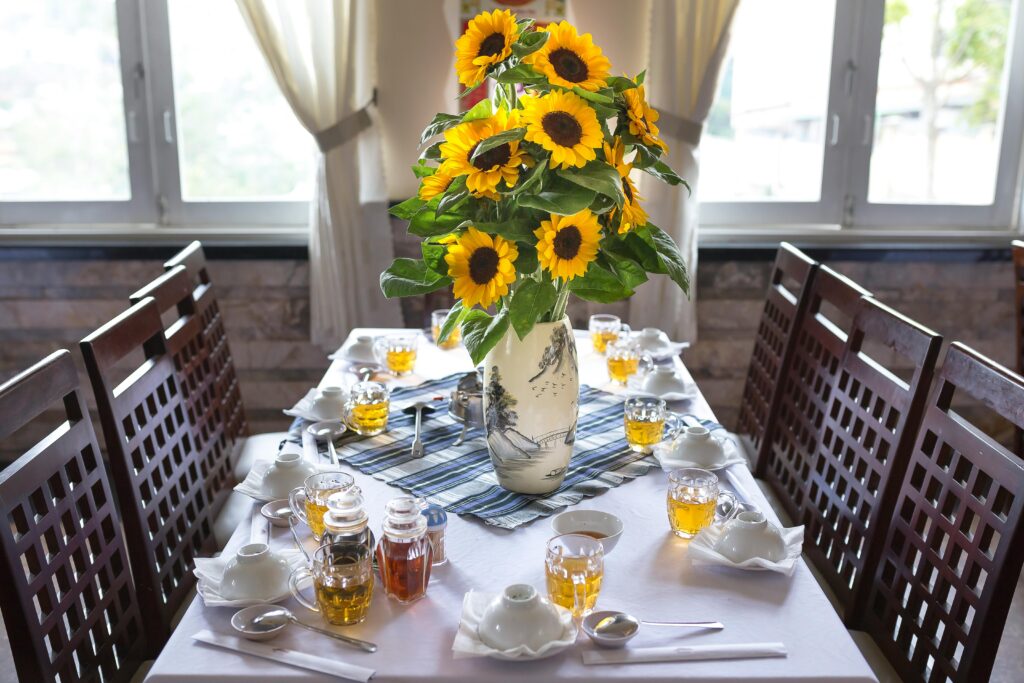
How to Plant Sunflowers 🌿
From Seeds
- Sow seeds directly outdoors after the last frost; sunflowers don’t like transplanting.
- Plant seeds 1 inch deep and 6 inches apart.
- Thin seedlings to 12–24 inches apart, depending on variety.
- Germination time: 7–10 days.
Successive Planting
- For continuous blooms, sow seeds every 2–3 weeks from late spring through midsummer.
Containers
- Dwarf varieties do well in large containers (minimum depth: 12 inches).
- Use a high-quality potting mix with added compost.

Caring for Sunflowers 🌞
Watering
- Keep soil moist during germination.
- Deeply water once or twice a week as plants mature.
- Avoid overwatering to prevent root rot.
Fertilizing
- Mix compost or slow-release fertilizer into soil before planting.
- Mid-season, apply a balanced fertilizer to encourage strong stalks and blooms.
Staking
- Tall sunflowers may need support to withstand wind.
- Use bamboo stakes or tie to garden fencing if necessary.
Pruning and Maintenance ✂️
- Deadheading: Remove spent blooms to encourage branching varieties to produce more flowers.
- Harvesting Seeds: Allow heads to mature on the plant; cover with mesh bags to protect from birds.
- Cut Flowers: Cut stems early in the morning when blooms are just opening for longest vase life.
Common Pests and Problems 🐛
- Birds & Squirrels: Love the seeds—cover heads with mesh bags for protection.
- Aphids: Spray with soapy water or neem oil.
- Cutworms: Use collars around seedlings to protect stems.
- Powdery Mildew: Ensure good airflow and avoid overhead watering.
Propagation 🌱
Seeds
- The primary method of propagation. Collect mature seeds from dry flower heads.
- Store in a cool, dry place until spring.
Self-Seeding
- Many sunflowers drop seeds that sprout the following year.
- Leave some heads in the garden if you’d like a natural regrowth.
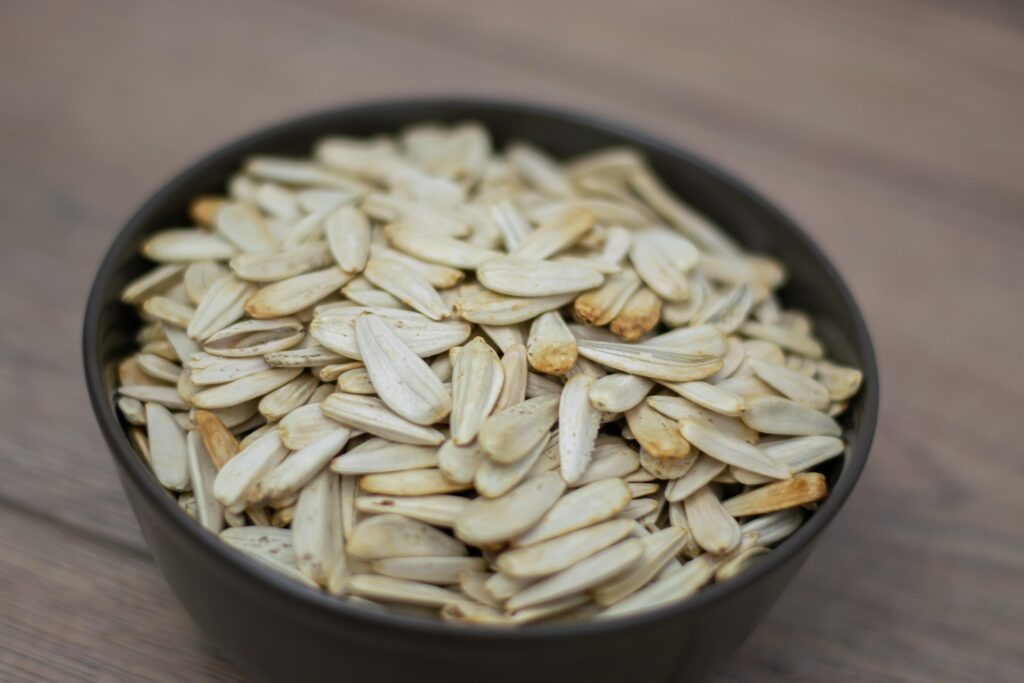
Seasonal Care Calendar 📅
- Spring: Sow seeds outdoors after frost.
- Summer: Provide consistent water, stake tall plants, deadhead for branching varieties.
- Fall: Harvest seeds when flower heads droop and backs turn brown.
- Winter: Store seeds, or leave heads outdoors for birds as natural feeders.
Expert Tips for Success 🌟
- Plant sunflowers where they get all-day sun.
- Stagger plantings for weeks of continuous blooms.
- Space plants generously for healthy air circulation.
- Grow dwarf types in pots for patio color.
- Let kids grow sunflowers—they’re quick, dramatic, and rewarding.

FAQs About Sunflowers ❓
1. Do sunflowers follow the sun?
Young sunflower buds track the sun (a process called heliotropism). Mature blooms usually face east.
2. How long do sunflowers take to bloom?
Most varieties bloom within 70–100 days after planting.
3. Can I grow sunflowers in pots?
Yes, especially dwarf varieties. Choose a deep, sturdy container.
4. Do sunflowers come back every year?
Most are annuals, but some perennial varieties exist. Annuals may reseed themselves.
5. How do I harvest sunflower seeds?
Wait until heads droop and the back turns brown, then cut and dry indoors before removing seeds.
6. Can sunflowers grow in poor soil?
Yes, but they’ll perform best with compost-enriched soil.
7. Do sunflowers need fertilizer?
Not much, but a light feeding during mid-growth encourages strong stems and big blooms.
Conclusion: A Flower That Brings Sunshine 🌞
Growing sunflowers is like planting happiness. Their bold blooms and towering presence add drama to any garden, while smaller varieties bring cheer to balconies and patios. Whether you’re after homegrown seeds, pollinator-friendly blossoms, or simply that iconic summer look, sunflowers are one of the most rewarding plants you can grow.
Plant a patch this season, and let the bright, golden faces of sunflowers bring warmth and joy to your garden.

